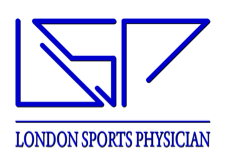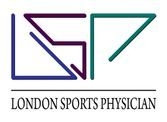Steroid Injections
Ultrasound-guided
Steroid Injections
Q1: What are corticosteroids?
A1:Corticosteroids are a class of medications related to cortisone, a naturally occurring hormone produced by your adrenal glands.
(These are NOT the same as Anabolic steroids which are banned substances in elite sport.)
Q2: Where and how are steroids injected?
A2: Either directly into the joints (intra-articular), tendon sheath (peri-tendinous) or around the joints (peri-articular).
For accuracy, ultrasound is often used to guide the needle to the intended area.
This is commonly known as an ‘ultrasound-guided injection’ (USGI).
Other ways of performing image-guided injections include the use of X-ray (fluoroscopic) or CT-guidance.
Some injections can also be safely delivered without the use of ultrasound guidance; these rely on a good knowledge of human anatomy and are known as ‘landmark-guided injections’.
Q3: How do steroid injections work?
A3: After injecting it into the intended area, corticosteroids work to reduce inflammation (heat, redness, swelling, & pain) in and around the joint.
You should eventually feel less pain, swelling, stiffness and warmth and be able to function a little easier.
It is important to realise that corticosteroid injections are NOT cures but by lessening the troublesome symptoms, provide a valuable ‘window of opportunity’ to do rehabilitation (e.g. physiotherapy) and put in place strategies to prevent recurrence of the injury.
Q4: Why are steroids injected locally?
A4: The goal is to deliver the medication directly to where it is needed and reduce inflammation in or around a single joint.
Q5: What types of steroids are available for injection?
A5: There are a few different varieties of steroids available for injection (e.g. Depomedrone/ Kenalog/ Hydrocortisone).
There is little evidence to suggest that one type of steroid is significantly better than another.
Most doctors use the type of steroid medication they are familiar with.
Q6: What conditions benefit from steroid injections?
A6: Localised steroid injections are useful for different types of arthritis and conditions such as bursitis, synovitis and tendon nodules.
Q7: Who should NOT receive these injections?
A7: Contraindications include patients who have either had a previous allergic reaction to a corticosteroid/ local anaesthetic or those with an infection in or around the joint.
Q8: How are these injections given?
A8: A steroid injection into or around a joint or tendon sheath is much like an injection into the arm.
Local anesthetic is often given before the injection or mixed directly with the steroid and injected into the joint to give immediate pain relief.
*It is important to have something substantial to eat and drink an hour or so BEFORE having these injections- this is to minimise the likelihood of feeling ‘lightheaded’ or fainting after an injection. *
Q9: Does the injection hurt?
A9: In the hands of an experienced doctor, the injections are relatively comfortable and similar in sensation to a routine blood test or injection into the muscle in the arm.
Q10: What should I feel after an injection?
A10: If local anesthetic was injected with the steroid, your pain may be improved in the few hours after the injection.
The local anaesthetic will only last for a few hours so your pain is likely to return once it wears off.
It is normal to feel a transient increase in discomfort in the joint that should resolve within 24 hours.
You can treat this discomfort by applying a cold pack such as a gel pack, bag of frozen vegetables, or crushed ice in a bag for up to 20 minutes at a time or by using medications such as Ibuprofen or Paracetamol.
Q11: How long does it take for the injection to work and how long will it last?
A11: Most corticosteroid injections typically take 1-2 weeks to take full effect.
The duration of improvement varies- Some patients report months of relief (or longer) whereas others find only a few days of relief.
Q12: If the 1st injection doesn’t work, can I try a 2nd injection?
A12: Generally most patients, if they are going to respond, will have some response after the first injection.
Patients who have gained no symptom relief or functional benefit from 2 injections should probably not continue with repeat injections, as the likelihood of improvement is small.
Q13: How often can I have repeat injections?
A13: There is research to suggest that too many injections may weaken tendons, ligaments, and accelerate the loss of cartilage.
In contrast, other scientific studies have found that injections can slow joint damage and help preserve the joint.
As a general rule, a reasonable approach is to limit it to a maximum of 3 injections per year for each affected joint.
Q14: What should I do after an injection?
A14: If possible, it is best to rest the joint completely for 2 days (‘Complete Rest’), and then avoid very strenuous activity on the joint such as heavy lifting for up to 2 weeks (‘Relative rest’).
Scientific studies have shown this may improve the effect of the injection.
It is advisable to stay around for 10-20 minutes after the injection to ensure there are no immediate side-effects (see below). This is a precautionary measure.
Q15: What are the possible side-effects of an injection?
A15: Most joint injections result in minor or no side-effects.
Side-effects that rarely occur include:
- Injury to the joint, ligament or tendon,
- Loss of the fat layer below the skin (lipoatrophy),
- Lightening or darkening to skin locally (hypopigmentation or hyperpigmentation)
- Calcification around the joint,
- Allergic reaction to the constituents in the injection,
- Transient vaginal spotting or bleeding in females,
- Joint Infection (see below).
The joint may ‘flare-up’ transiently after an injection.
Systemic effects may occur due to absorption of some of the steroid from the joint.
Some people may experience a vasovagal episode after an injection and feel faint.
Q16: When should I call my doctor or seek medical attention?
A16: If the injected joint becomes very painful, red, or swollen, seek medical attention immediately as the joint may be infected.
As previously explained, one of the very rare (1 in 5,000-10,000) risks of a joint injection is infection.
However, the most common cause of these symptoms is a reaction to the injected steroid (“steroid flare”) that occurs in 2% to 5% of patients.
This usually begins 6-12 hours after the injection and may last for 2-3 days.
Regardless of the cause, if there are concerns, it is important to discuss this with a medical professional.


